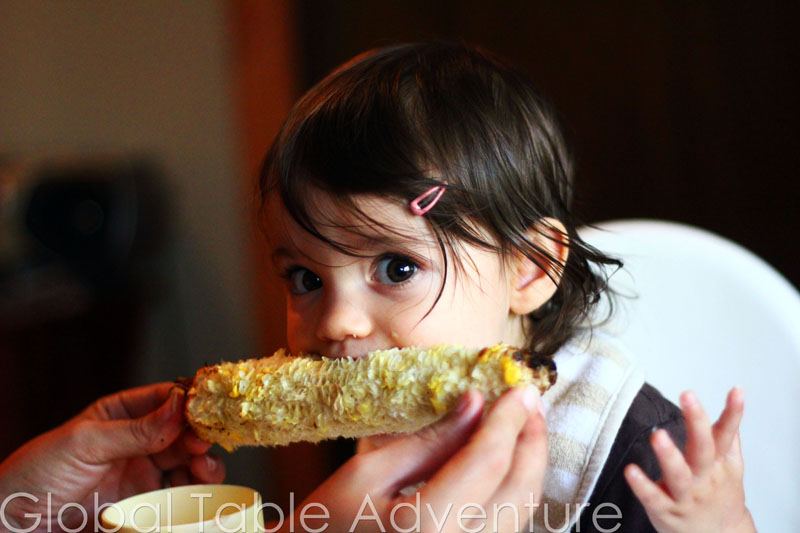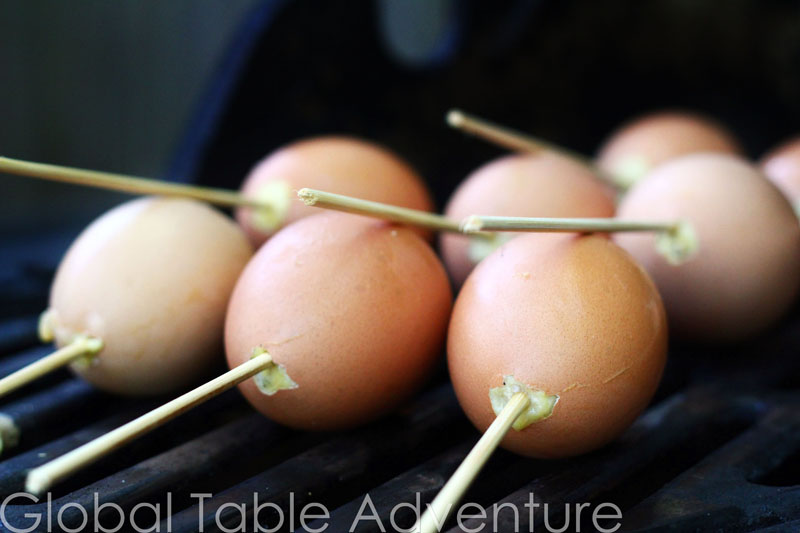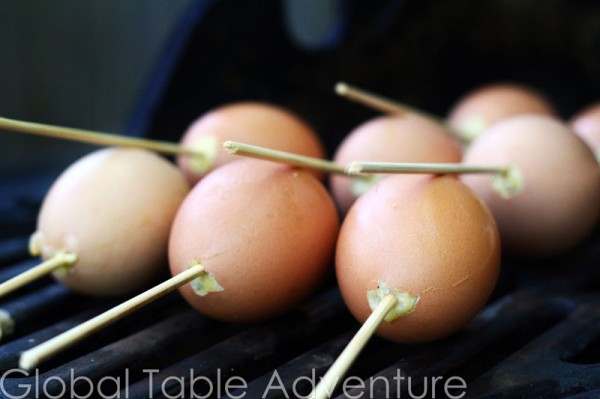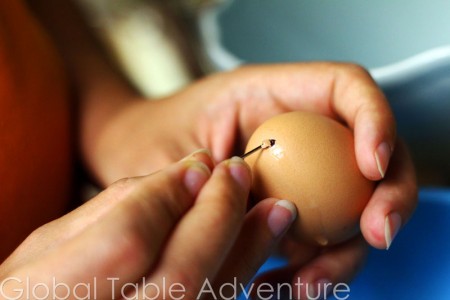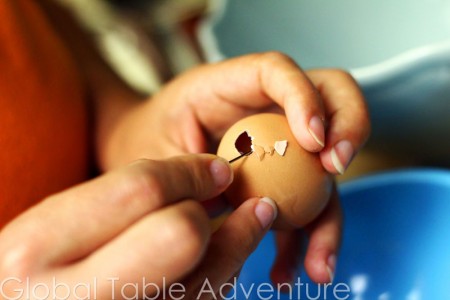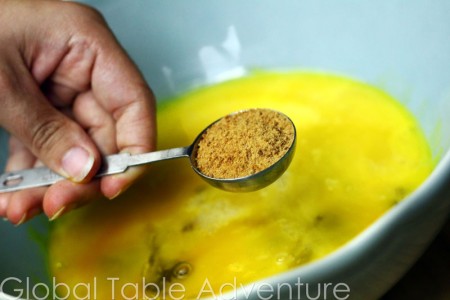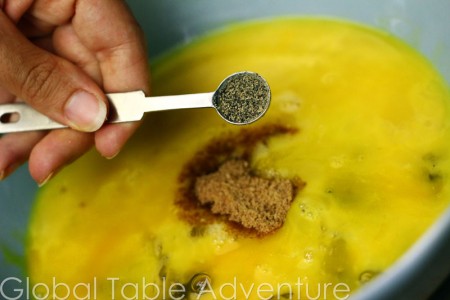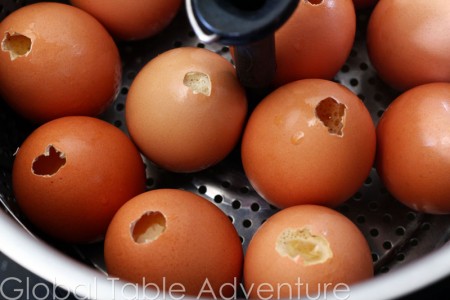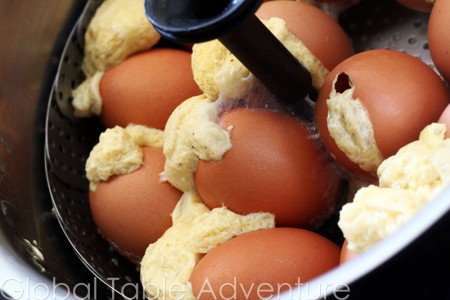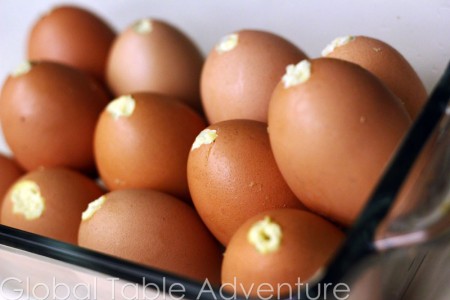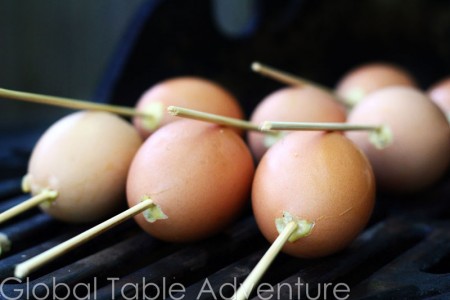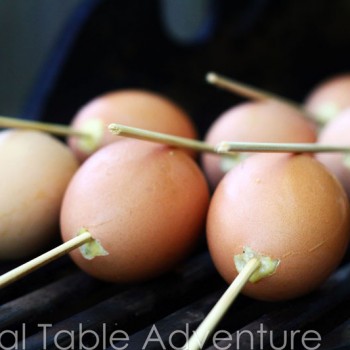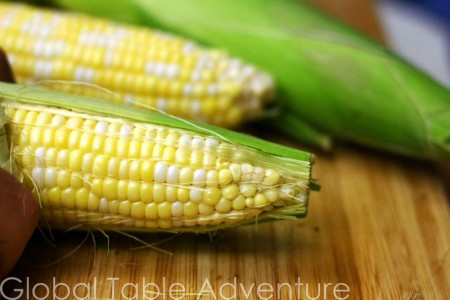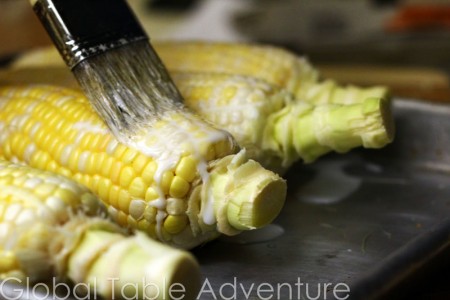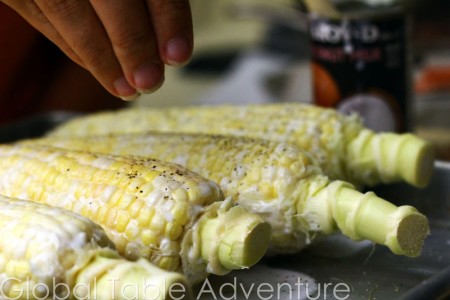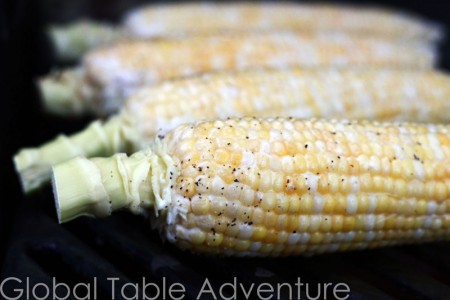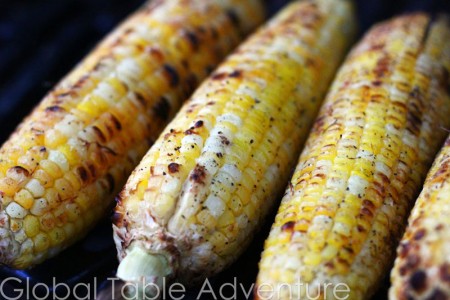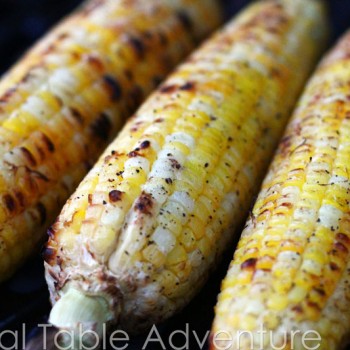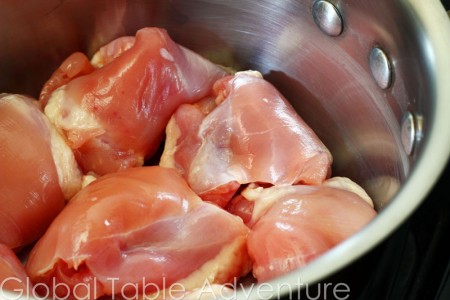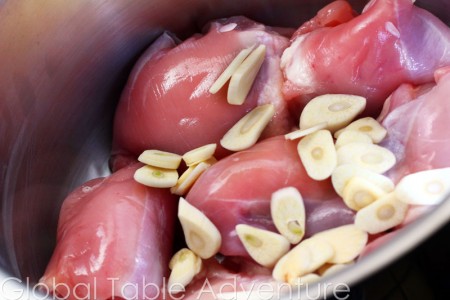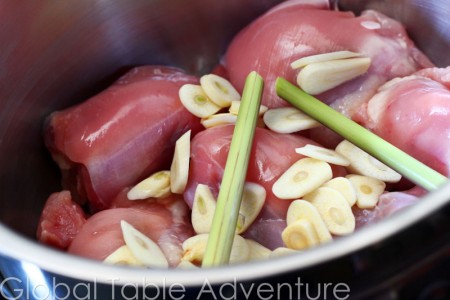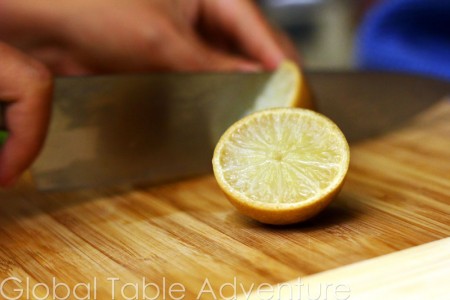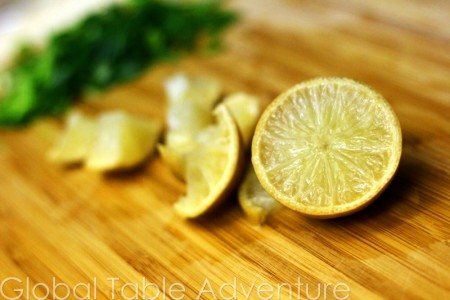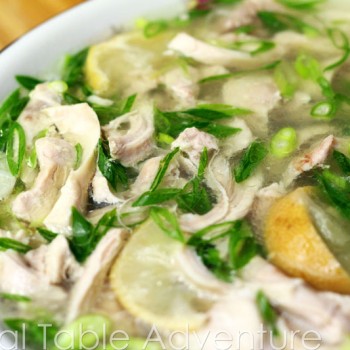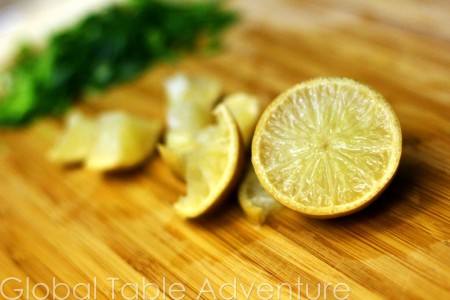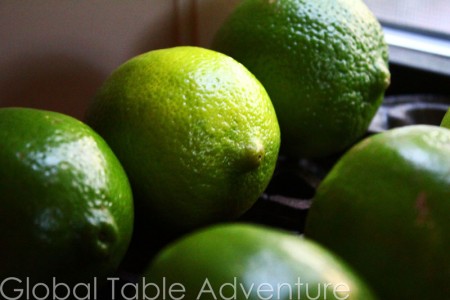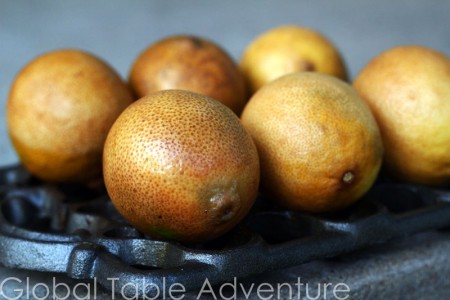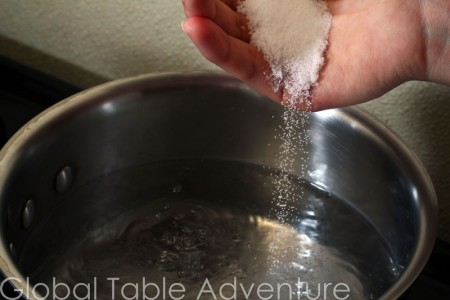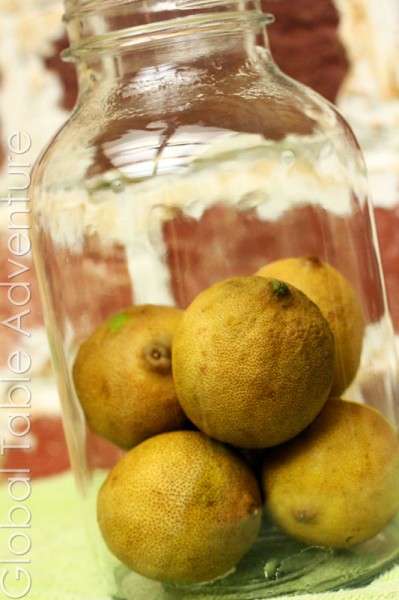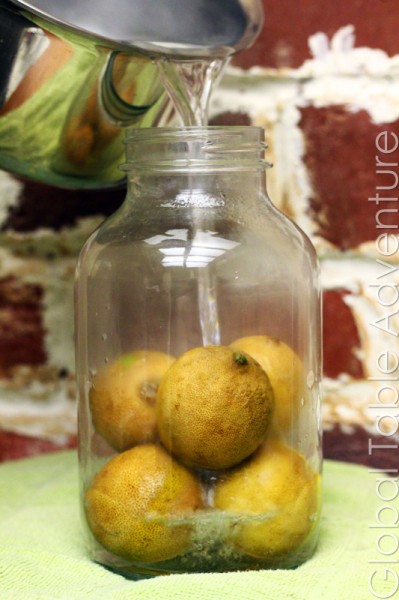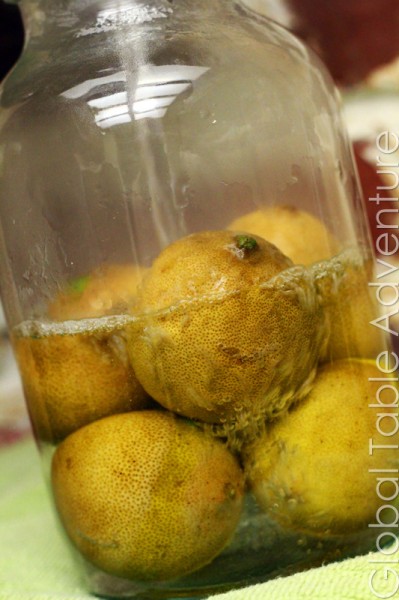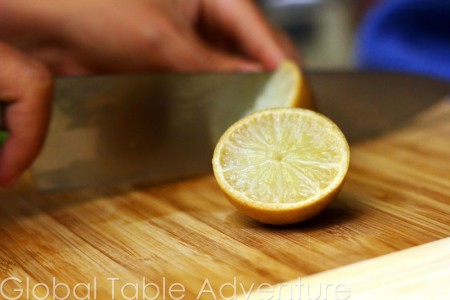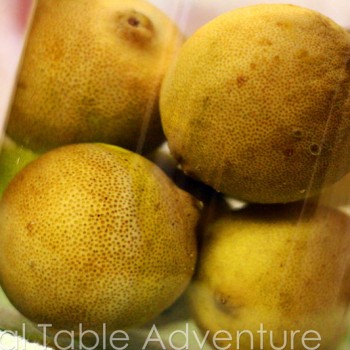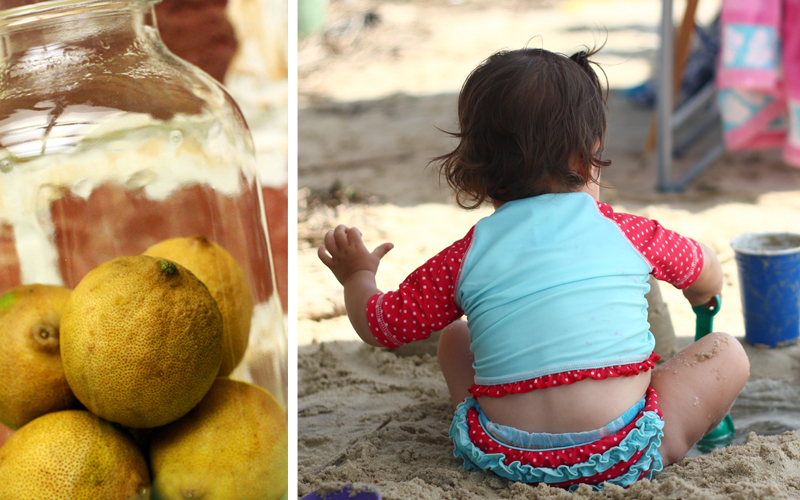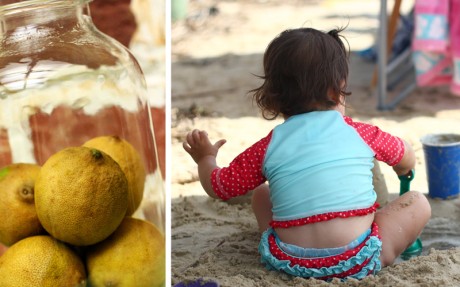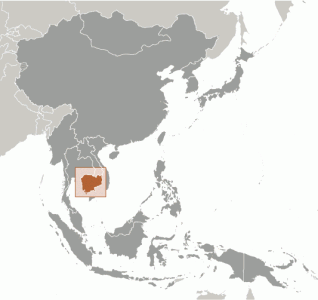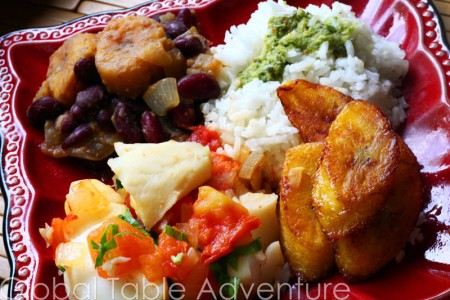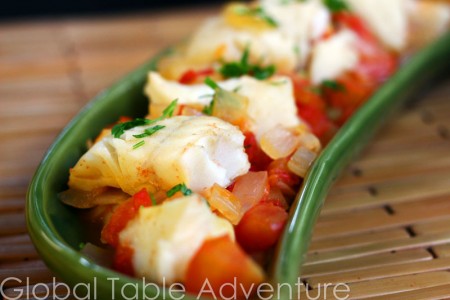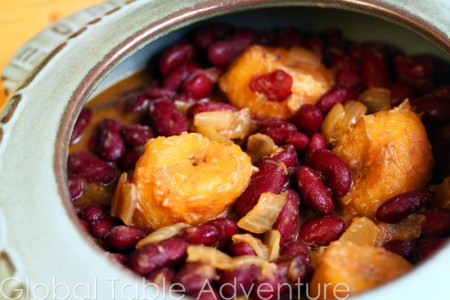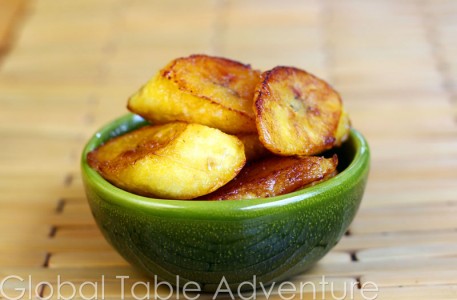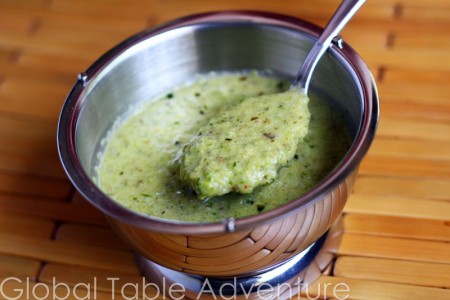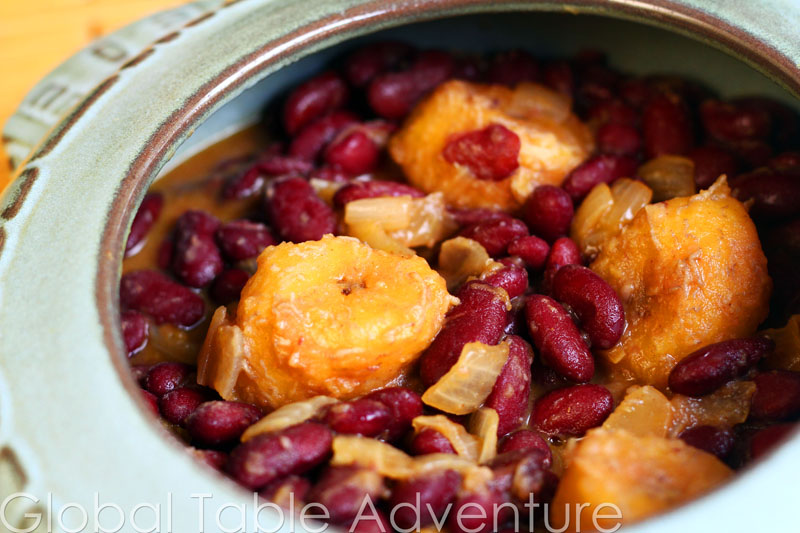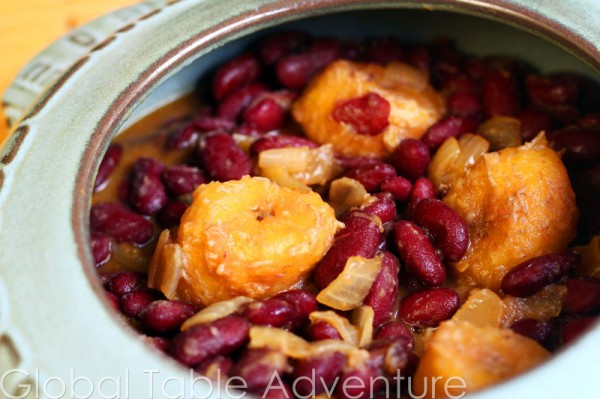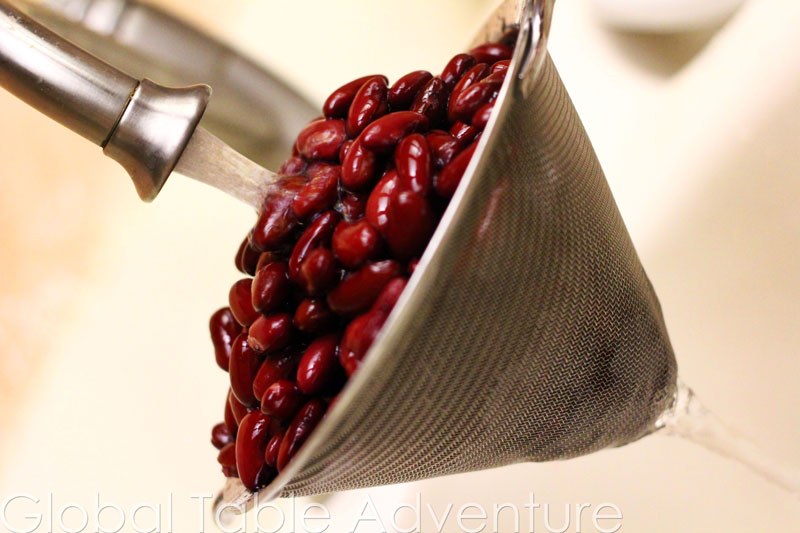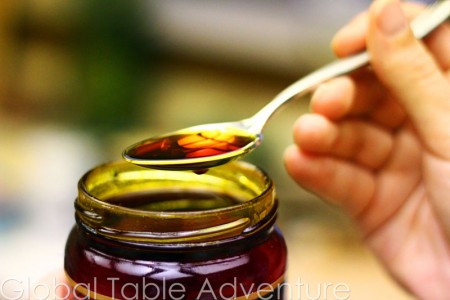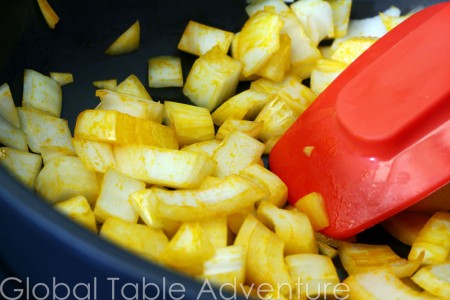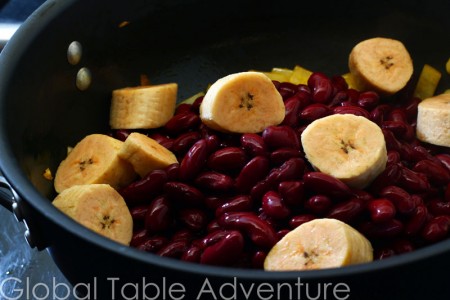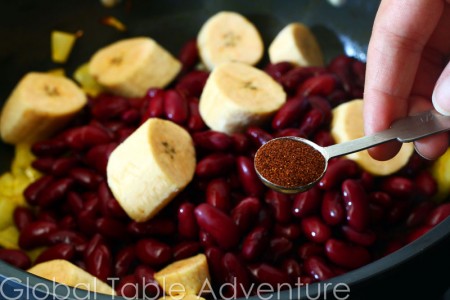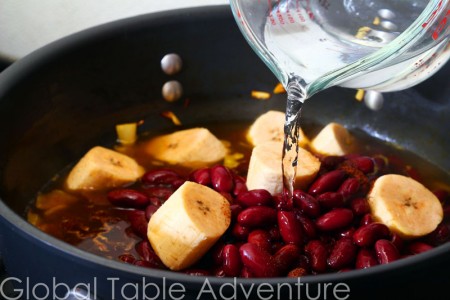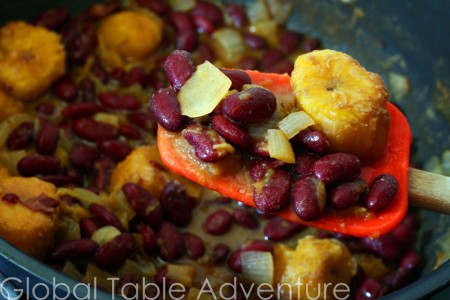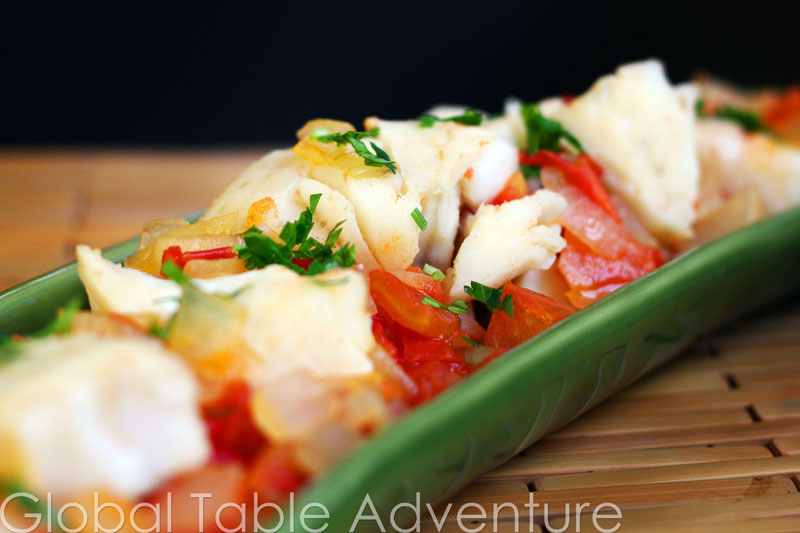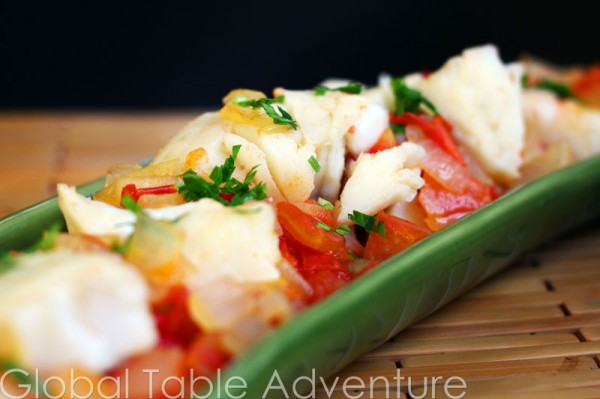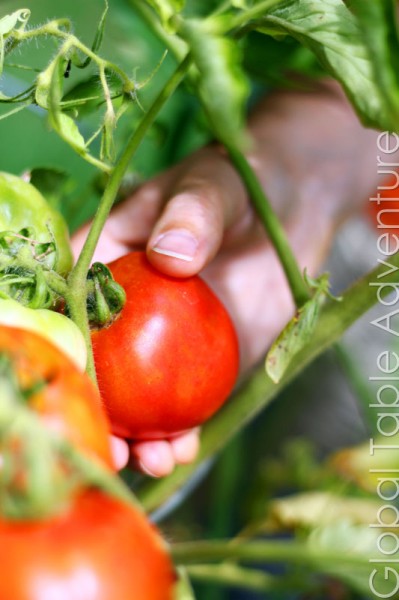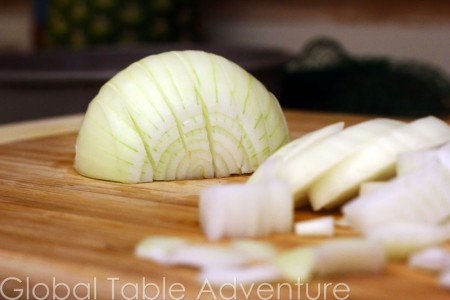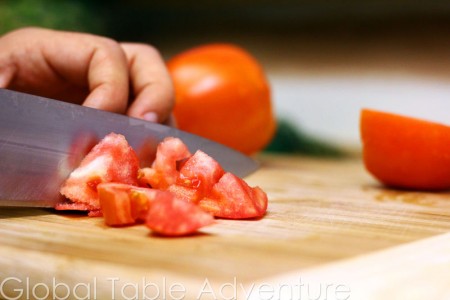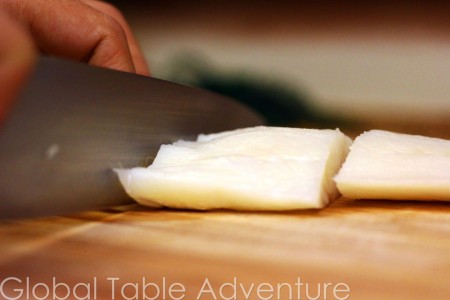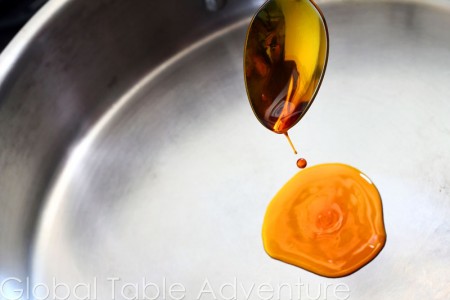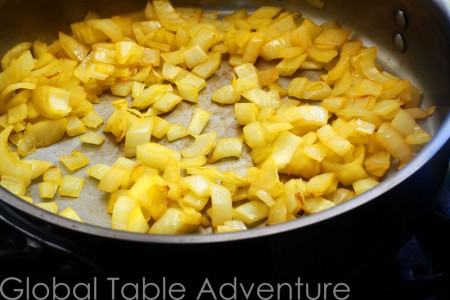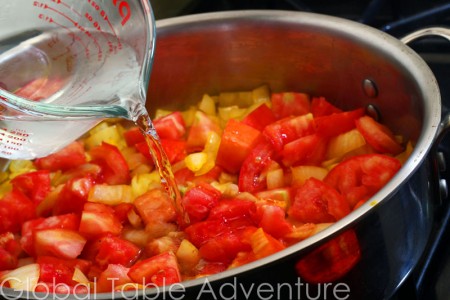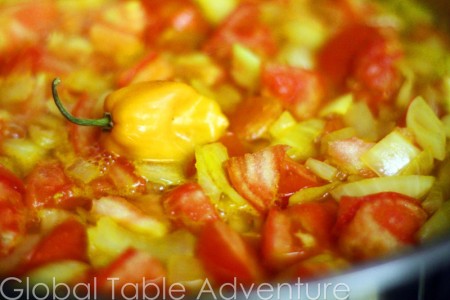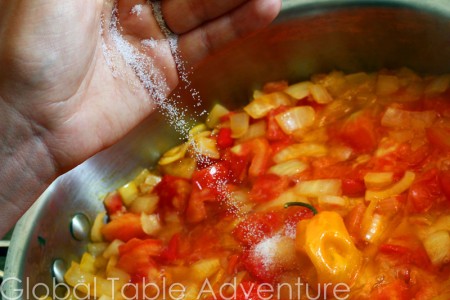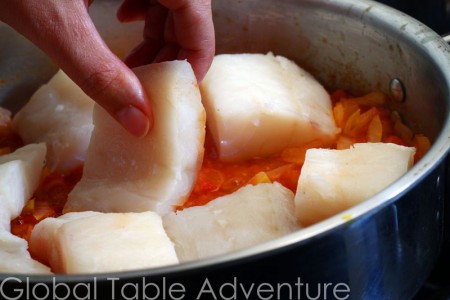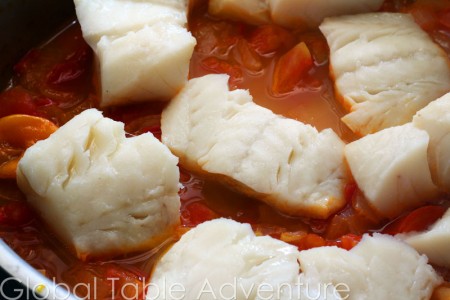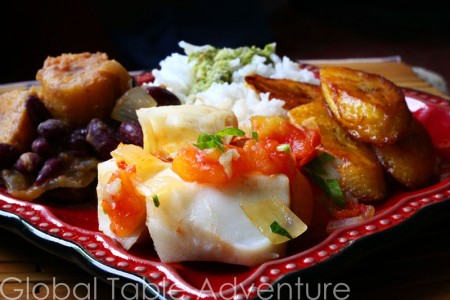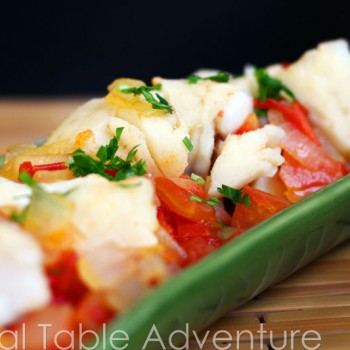We had a fantastic long weekend in Virginia.
The temperature never even got close to 104F.
We visited family, swam on the beach, helped Ava build her first sandcastle, and ate like royalty.
When I say royalty, I mean it. My sister-in-law made breakfast, lunch, and dinner for up to twelve people every day. On real plates. That woman is a superhero. Her sidekick, my brother Chris, isn’t so bad either.
And then. Reality check.
We came back to Oklahoma with nothing but a few pickled limes to greet us.
It was time to get cooking, or Cambodia would pass us by.
Grilled Corn with Coconut Milk [Recipe]

What I liked most about this dish:
I am always looking for new ideas for corn. This concept is a win-win-win – tropical coconut flavor, simple preparation, and a real conversation piece at the family barbecue. If you chill the coconut milk in the fridge, it thickens up (like mud) and spreads onto the corn better.
What I liked least about this dish:
While the coconut milk stays on the corn pretty well, the flavor is very mild. For those who like a bolder flavor, I suggest basting the corn a few times during cooking or serving the cobs with a extra coconut milk. In fact, making coconut butter (mashing a splash of coconut milk with some room temperature butter) would be pretty much awesome with this recipe.
Cambodian Grilled Eggs [Recipe]
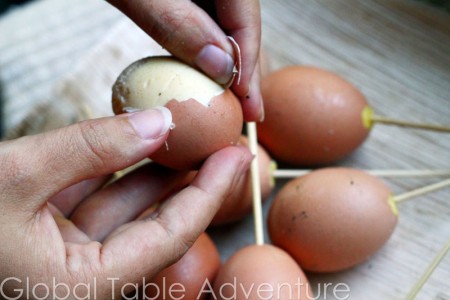
What I liked most about this dish:
I love the concept of grilled eggs, although making them is a lesson in patience and perseverance. Even still, this recipe tasted good enough that I might try it again to see if I can work things out better next time.
The egg mixture’s flavor was the best part – not too fishy or sweet. For those who don’t have the time – to heck with filling the eggs up and grilling them – instead, I make scrambled eggs with the egg mixture for an Asian-inspired brunch. Yum! For those who like a bolder, stinkier mixture, feel free to play around with the measurements of the fish sauce – or sugar, for a sweeter mixture.
Just as an aside, when I was a little girl my mom taught us to hollow out eggs with this same technique, then we washed them in scalding water, and filled them with jello. Oh yeah. Best Easter Eggs EVER! 🙂
What I liked least about this dish:
This is really, really hard because the eggs want to fall all over the place. Also, once the steam started cooking them, they boiled over and made a big mess. Although it was fixable (the egg cleaned up off the shells easily) I think gentle steaming and filling the eggs partway is the best way to avoid the mess I had to deal with.
Grilling seems to be more about reheating the eggs than imparting flavor, but this is probably because I have a gas grill, not charcoal.
Chicken and Pickled Lime Soup [Recipe]
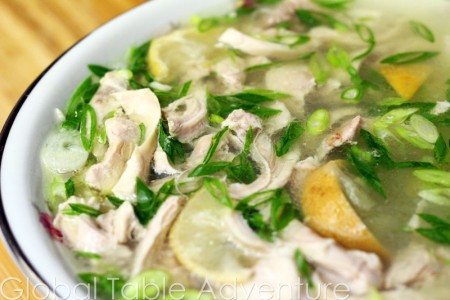
What I liked most about this dish:
This is the perfect soup for health, lightness and beauty. The green onion quickly infuses the broth with springtime flavor. The garlic isn’t overwhelming, and a trace of lemongrass from my garden rounds things out. I’m not sure if I have allergies or am sick, but this soup definitely soothes an aching body.
What I liked least about this dish:
I forgot to add salt, so the broth was a little bland. Other than that, this recipe is a great base for any sort of chicken soup. I served it with rice on the side to make a more substantial meal.
Pickled Cambodian Limes [Recipe]
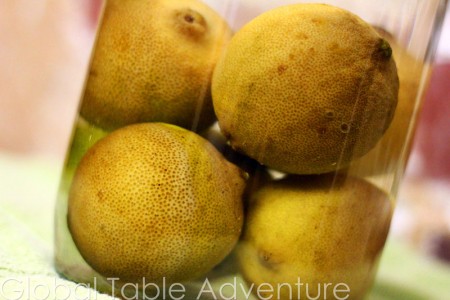
What I liked most about this dish:
This was another dish that had major novelty factor going. First, I’d never pickled anything before. Second, I’d never had a pickled lime. What fun! I liked the bitterness from the rind that infused the entire lime, concentrating the flavor.
What I liked least about this dish:
Although the flavor was good, I thought the texture was odd – very soft and squishy. I’m not sure how I feel about it overall. Keith thought our pickled limes tasted just like regular limes which was a pretty deflating comment. While I do agree they were very “limey” there was definitely another, bolder, funkier bitter flavor going on.
Ava’s Corner
Since you guys are watching Ava grow up, I thought I’d share a few fun facts about her:
Ava says: up, out, and mamma.
Ava signs: milk, more, all done, drink, change my diaper
Ava plays: peek-a-boo, hide and seek (just behind one object). Also, she loves to be chased – especially if you count to three before you run after her. She cracks up every time.
Ava gives: the best hugs in the entire world, ever, in a million, billion years.

